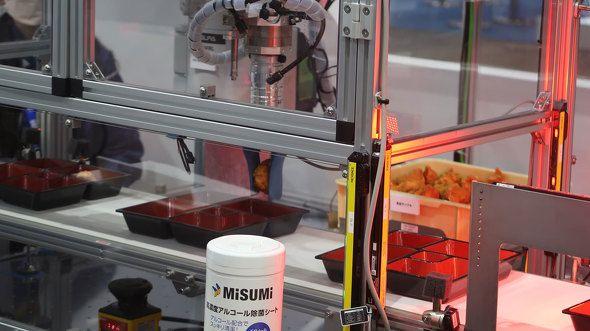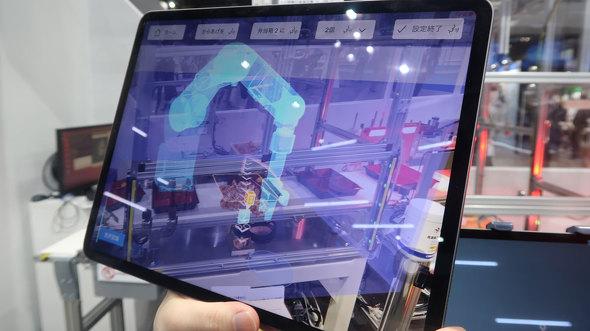"Portable Wi-Fi" Review
25/03/2022

Robot arm that grabs fried chicken and transports it to a container

Mitsubishi Electric will exhibit at the International Robot Exhibition 2022 (Tokyo Big Sight, until March 12), which is being held from March 9 to March 12, 2020. Mitsubishi Electric will exhibit "teachingless robot system technology," a robot control technology that can accurately perform work even with verbal instructions. showed off. It has the flexibility to quickly implement instructions such as "Put 2 pieces of fried chicken in the first compartment of the lunch box... Ah, 3 pieces." [Image] The teaching-less robot system technology, which can pick up even a heaping amount of fried chicken, is a robot control technology developed by combining technologies such as voice recognition, spatial recognition, AI, and AR. One of the goals is to make it easier for people with no specialized knowledge to teach robots how to move by speaking. To teach the robot what to do, just talk to the tablet that acts as a portal, or fill in the "what", "where", and "how many" fields in the dedicated app. When you talk to him, you can do it by asking him to put 2 pieces of fried chicken in the first section of the bento box. After giving instructions, by pointing the tablet camera at the actual robot and superimposing the AR image, it is possible to check in advance whether the robot will move as intended. It is said that this is the first technology in the industry for industrial robot manufacturers to teach robots what to do by voice. In food processing factories and other places where food is handled, there are many situations where it is not possible to operate the touch panel of the machine by hand. Mitsubishi Electric has independently developed a voice recognition AI that can recognize instructions even in noisy factories. It can give instructions even in environments where it is difficult for humans to hear. Even at the venue of the International Robot Exhibition, his instructions were followed without raising his voice. Even if the instructions are ambiguous, they can operate as long as they have the necessary information. In addition to being able to execute "two fried chicken in the first compartment" or "two fried chicken in the first compartment", you can also put "two fried chicken in the first compartment of the bento box ... oh, three. I was able to respond to "feints" such as "de".
In factory tours and videos recording production sites, you can see robot arms moving products and parts at high speed. You may. However, according to Mitsubishi Electric, in the food industry, it is extremely difficult to move food at a speed that surpasses that of humans. “The reason why robots can operate at high speed at industrial sites is that they always move objects of the same shape from one place to another. , Because the location to pick up is different every time, it is difficult to handle with the speed of a human." (Mitsubishi Electric) Because of this problem, it was said that it was difficult to introduce robot arms to food processing factories. "I often hear that people in the field, who are suffering from a shortage of human resources, would like to think about it for the time being if it would be better to introduce it." Create a 3D model of the surrounding environment and check the range of movement. A camera installed above the conveyor belt detects the position and tilt of the lunch boxes as they flow, automatically optimizing the operation and packing the food. By combining this automatic optimization technology with a system that allows verbal instructions, we have created a robot arm that "understands what you say and can work at the same speed as a human being". The development of the teaching-less robot system technology has been completed and demonstrations have been made public, and sales are undecided.
ITmedia NEWS